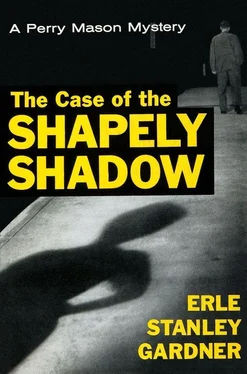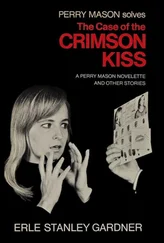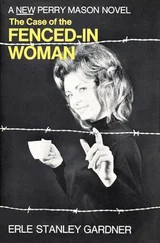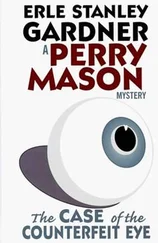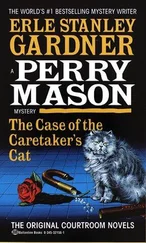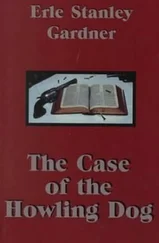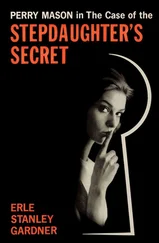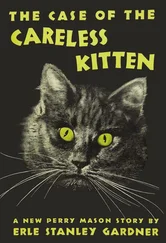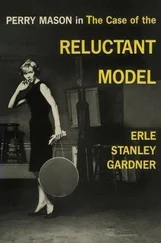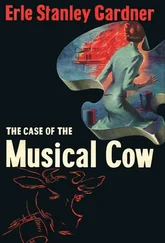“Did you send this letter?”
“Indeed not.”
“Did you have anything to do with it?”
“Certainly not.”
“Did you know about it being sent?”
“Only what I have stated in my testimony.”
“Therefore, what impression did the name A. B. Vidal make on your mind?”
Judge Seymour glanced at Mason. “Is there any objection to the witness testifying to the thoughts that were in her mind?”
“Not in the least,” Mason said. “I would like to cross-examine the witness on that point.”
The witness again glared at Mason and raised her voice angrily. “I was simply sure that it was blackmail, that someone was using this name in order to impress my husband.”
“That’s all my redirect examination,” Ruskin said.
“Recross?” Judge Seymour asked Mason.
“Thank you, Your Honor. I would like to ask the witness what there was in her past that would make it seem to her that the use of her maiden name would have connotations of blackmail in the mind of her husband.”
“Just a minute, just a minute,” Ruskin shouted, jumping to his feet. “The witness didn’t say anything of the sort. The question is improper. It’s argumentative, it calls for facts not in evidence, it has to do with intangibles, it’s no part of cross-examination.”
“On the contrary,” Mason said, “the prosecution opened the door, the witness was asked about her frame of mind, and I insist that my question is based upon a fair interpretation of the witness’s answer.”
“I think the prosecution may have opened the door,” Judge Seymour said, “but that doesn’t mean that we can spend our time going into matters which are not relevant. However, in view of the nature of the redirect examination, I am going to permit this one question.”
“May I have the question read, please?” Mrs. Theilman asked.
The court reporter read the question. “I would like to ask the witness what there was in her past that would make it seem to her that the use of her maiden name would have connotations of blackmail in the mind of her husband.”
The witness hesitated.
“You understand the question?” Mason asked.
“I’m not sure that I do.”
“What was there in your past which would make you feel that the use of your name was connected with blackmail?”
“Nothing!” she fairly spat at him. “Absolutely nothing!”
Mason smiled urbanely. “Thank you,” he said, “that concludes my recross-examination.”
“That’s all,” Ruskin said.
The witness, still angry, got up from the witness stand and strode around the counsel table, glaring at Mason as she passed.
Mason turned to Janice Wainwright who was seated directly behind him and whispered reassuringly. “That demolishes the picture of the demure little widow, bowed down by grief,” he said.
Ruskin, recognizing Mason’s tactics and realizing the extent to which the picture he had wished to create in the minds of the jury had been marred by Mrs. Theilman’s anger, called Lt. Tragg to the stand.
Lt. Tragg, his manner crisply professional, described the scene of the murder. He had, he explained, been called in to co-operate with men from the sheriff’s office because he had been working on the case after it appeared that Morley Theilman had vanished following receipt of a blackmail letter.
Calmly, unemotionally and objectively he described the conditions in the building which had been used as a real estate office. There was a davenport which could be made into a double bed, a toilet and shower, a somewhat battered desk, several chairs, a counter running the length of the place, a storage cupboard in which there were old contracts of sale and descriptive brochures.
The body lay face down on the floor with the right hand stretched slightly above the head, the left hand on a level with the left hip.
The body, Lt. Tragg pointed out, was quite stiff at that time. The phenomenon known as rigor mortis had fully developed so as to encompass the entire body.
“What time was it that you first saw the body?” Ruskin asked.
“It was seven-twenty-seven p.m.”
“That was on Wednesday, the fourth?” Ruskin asked.
“That is correct.”
“Do you know of your own knowledge when the body had first been discovered?”
“Not of my own knowledge, no.”
“You know when you were first notified?”
“Yes.”
“What time was that?”
“Shortly before six o’clock.”
“You may inquire,” Ruskin said.
“Was the davenport made into a bed?” Mason asked.
“No, sir. It had been folded back as a davenport.”
“How do you know it had been folded back? How do you know it had ever been unfolded?”
“I don’t know.” Tragg said at length.
“Thank you. That’s all,” Mason said.
“Doctor Lombard G. Jasper,” Ruskin announced.
Dr. Jasper came forward, was sworn, testified that he was an assistant autopsy surgeon, that he had examined the body of Morley L. Theilman before it had been moved from the real estate office where it was found; that his examination was at approximately seven-thirty on Wednesday, the fourth; that in his opinion the time of death had been somewhere between the hours of midnight and five o’clock in the morning.
“Cross-examine,” Ruskin snapped.
“How do you fix the time of death, Doctor?” Mason asked.
“By various factors which furnish the trained forensic pathologist with clues.”
Mason asked, “And what are these various factors which furnish the forensic pathologist with clues?”
“Post-mortem lividity, for one.”
“What else?”
“The development of rigor mortis — the time of onset, the time of duration and the time of departure.”
“Now then,” Mason said, “let’s forget the technical patter, Doctor, if we may, and describe these things in terms the jury can understand. What is post-mortem lividity?”
“It is a distinctive color of the corpse due to the gravitational settling and subsequent coagulation of blood in the capillaries.”
“I see you’re not doing very well,” Perry Mason said. “Perhaps I can help you clarify things a little, Doctor. During life there is a blood pressure, is there not?”
“Yes.”
“After death this blood pressure is reduced to zero?”
“Yes.”
“So the blood naturally settles to the lower parts of the body of the deceased.”
“Yes.”
“And, since it ceases to circulate, it begins to coagulate.”
“Yes.”
“So the lower parts of the body have a peculiar color, a certain so-called lividity due to this settling and coagulation of the blood?”
“Yes.”
“How soon after death does that post-mortem lividity begin to establish itself? That is, how soon after death does it become evident?”
“Well, it begins to be apparent in from one to two hours after death.”
“And remains how long after death?”
“For some considerable period of time.”
“As much as twelve hours?”
“Oh, yes.”
“As much as twenty-four hours?”
“Yes.”
“Therefore,” Mason said, “when you refer to postmortem lividity as indicating the time of death, it would only show that a man had been dead for more than one hour. Isn’t that right?”
“No. Post-mortem lividity continues to develop. The color is an indication of the time of death.”
“Is there any difference between post-mortem lividity at the end of five hours and at the end of ten hours?”
“By five hours I would consider that post-mortem lividity had been fully developed.”
“And post-mortem lividity was fully developed in the body that you saw?”
“Yes.”
Читать дальше
